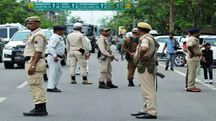‘Bihar approves gobi farming’: Assam minister’s post leaves internet picking through history
Assam Minister Ashok Singhal found himself at the centre of a social media storm after sharing a photo of a cauliflower field with the caption, “Bihar approves Gobi farming,” following the National Democratic Alliance’s landslide victory in the state.

Assam Minister Ashok Singhal found himself at the centre of a social media storm after sharing a photo of a cauliflower field with the caption, “Bihar approves Gobi farming,” following the National Democratic Alliance’s landslide victory in the state.
Many users quickly noted the chilling historical undertone: the image evoked the infamous “cauliflower burial case” or the Logain massacre during the 1989 Bhagalpur riots.
Over 100 Muslims were reportedly killed in the Logain village, their bodies buried and cauliflower saplings planted over them to hide the evidence. Since then, images of cauliflower have periodically appeared online as a grim reference to the massacre, including posts during the March 2025 Nagpur violence and a Karnataka BJP meme in May celebrating Maoist killings in Chhattisgarh.
Social media users expressed disbelief over the minister’s post. One commented, “No way this coming from a cabinet minister of Assam,” while another questioned if it was “an official handle or a parody account.”
The Logain Massacre
The Bhagalpur violence erupted on October 24, 1989, amid rising tensions linked to the Ram Janmabhoomi movement. Over two months, the riots engulfed Bhagalpur city and 250 surrounding villages, leaving more than 1,000 people dead—about 900 of them Muslims—and displacing 50,000.
In Logain village, 116 Muslims were killed by a mob of roughly 4,000, their bodies buried under cauliflower and cabbage saplings. The gruesome crime was uncovered nearly 25 days later by AK Singh, IAS, then Bhagalpur’s special ADM (law and order).
The violence was triggered after a Ramshila procession, part of the VHP’s Ayodhya campaign, passed through Muslim-majority areas. Initial clashes led to police firing, deaths, and retaliatory mob attacks, rapidly escalating into widespread massacres, arson, and destruction of property. Entire localities were devastated, with mass killings taking place publicly in Bhagalpur, Chandheri, and Logain.
The official toll recorded 1,070 dead, thousands displaced, and widespread destruction of homes and places of worship. Decades of investigations, delayed trials, sporadic convictions, and minimal compensation have left many survivors feeling justice remains incomplete.
The minister’s post has reignited painful memories of one of independent India’s deadliest episodes of communal violence, sparking discussions about political sensitivity and historical awareness on social media.
(Inputs from India Today)
Copyright©2025 Living Media India Limited. For reprint rights: Syndications Today









